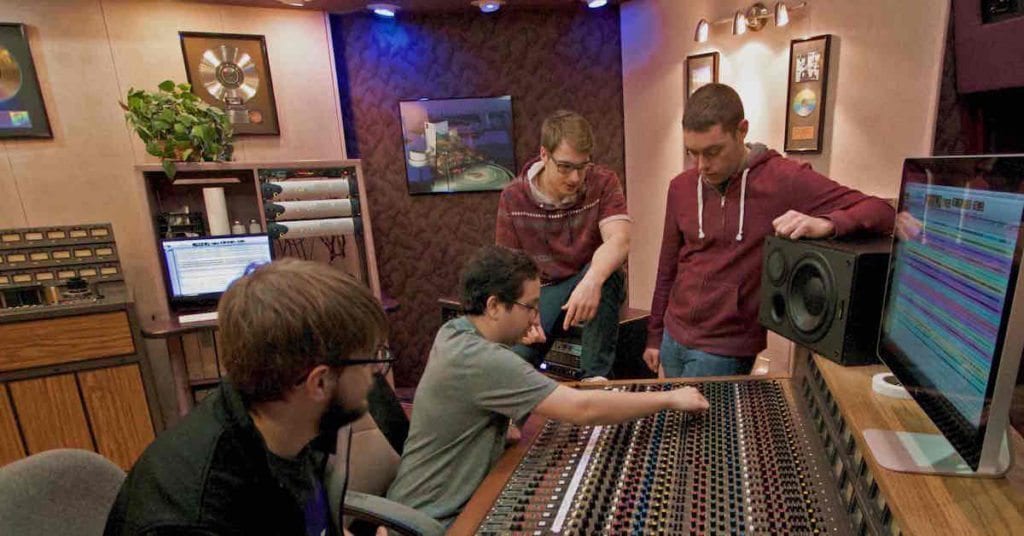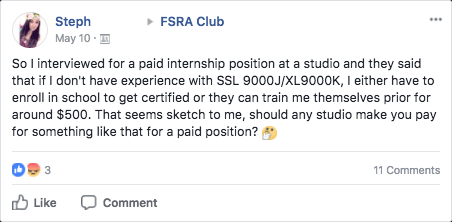[vc_row][vc_column][ultimate_spacer height=”20″][vc_column_text]
With the current technology available for audio production, it is possible for anyone to possess an affordable and portable recording studio within a laptop computer. However, it is important to remember that these personal studios have limitations that prohibit multitudes of aspiring young producers & engineers from learning essential skills or hands-on experience on a whole range of audio gear that is still being used in the industry at the professional level.
The Problem
As a studio owner and audio educator for more than 20 years, I have seen a widening gap in the level of education available to students looking to pursue a solid career in the audio industry. Many audio programs have popped up in the last decade that focus on educating using only laptop technology. They are not offering students the “hands-on” experience of working with large format consoles or patchbays, etc! (analog tape machines)
+Before Digital Audio Workstations were available, there was only hardware that had to be connected to work. You had to learn about the signal path by routing signal through a console and making physical connections to signal processors using patch cables. DAW’s have streamlined studio workflow to the point where you can conveniently drag or click to connect sound sources and signal process.
+ Without a clear understanding of how signal travels from a source to a destination, students hit roadblocks when it comes to using advanced signal processing on DAW’s. They are completely intimidated when they see a console. Although they have many plug-in options available to them within the DAW, they become confused and unaware of the possible routing options available to them because they do not possess an understanding of basic signal flow.
Without a clear understanding of how signal travels from a source to a destination, students hit roadblocks when it comes to using advanced signal processing on DAW’s. They are completely intimidated when they see a console. Although they have many plug-in options available to them within the DAW, they become confused and unaware of the possible routing options available to them because they do not possess an understanding of basic signal flow.
+Even if an audio program has a studio with a console, the time allocated for each student is minimal and not enough to gain a complete understanding of all of the possible combination of routing available on a large console.
I have seen many instances of graduates of audio programs facing an amazing career opportunity but, not qualifying for the position because, they have had no experience working with actual mixing consoles or particular consoles! Many of the good paying jobs in audio tend to work with gear they did not learn on in school.

It is important to remember that you are always a student and need to keep up with new technologies as best as you can. Even if you don’t think that a certain technology is relevant to what you do, you never know when a situation comes up where it will come in handy. You can’t possibly know everything but, being able to tap into a network of contacts who collectively could help you in almost any situation is priceless.
Possible Solutions
There are a wide variety of resources available on the internet that covers almost anything you would want to know about. From basic “how to” information on YouTube to more structured courses like Lynda.com. Learning from others at local events or conferences held by the Audio Engineering Society and other industry organizations will accelerate your level of understanding.
When teaching in the class, I find it difficult to explain “signal path and routing” without actually having a console in the room. Fortunately, there are new tools now available that will address these issues and help bridge the gap for teachers and students. One of those tools is “Virtual Audio Studio” by Audio Fusion, which uses the ‘hands-on’ approach of working on a console simulation.

As an Audio Educator, using Soundcheck2D in the classroom for my Audio Technology courses would have made explaining signal flow and applying signal processors much easier to teach and much easier to understand from the students perspective. More importantly, it allows the students more opportunity to practice hands-on techniques of a real mixing environment conveniently on their computer. As time goes on, it will be interesting to see how these new tools further “bridge the widening gap” between fundamental concepts of mixing from the past into the future.
To download Soundcheck2D, go to: https://audiofusion.com/soundcheck2d[/vc_column_text][vc_separator color=”black”][/vc_column][/vc_row]